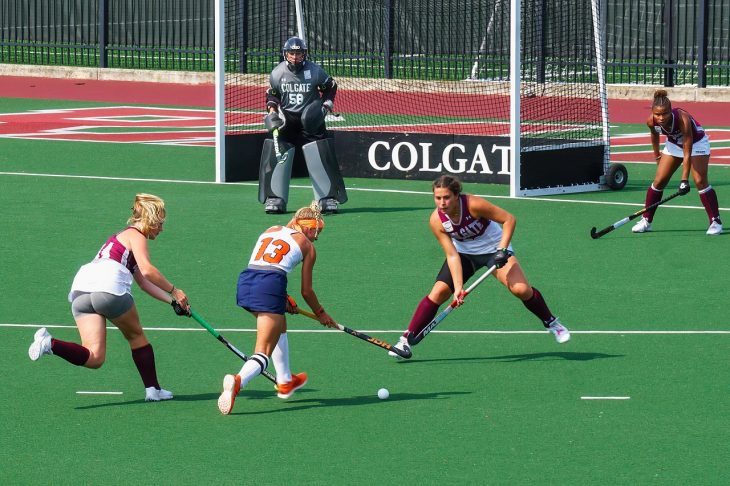
Field hockey is a captivating sport that combines grace, agility, and tactical brilliance. With its origins dating back to ancient civilizations, this sport has evolved over centuries to become a thrilling and competitive game enjoyed by millions around the world. In this article, we uncover 11 fascinating field hockey facts that shed light on the history, rules, and quirks of this beloved sport. So, let’s dive into the world of field hockey and explore its intriguing secrets!
Ancient Origins
Field hockey traces its roots back to ancient civilizations. The game can be traced as far back as 4,000 years ago when ancient Egyptians played a game similar to modern-day field hockey. It is fascinating to think that this sport has endured the test of time, captivating people across cultures for millennia.
Global Popularity
Field hockey is a truly global sport. While it might be most commonly associated with countries like India, Pakistan, the Netherlands, and Australia, field hockey has a strong following in various parts of the world, including Europe, Asia, Oceania, and even some parts of North and South America. The International Hockey Federation (FIH) governs the sport globally, overseeing international competitions and promoting its growth.
Unique Stick Design
The hockey stick is a crucial tool in a player’s arsenal. Field hockey sticks are typically made of composite materials such as carbon fiber and fiberglass, combining durability and flexibility. The stick’s design varies between players’ positions, with attackers using lighter sticks for enhanced maneuverability and defenders favoring heavier sticks for increased power and control.
Astroturf Revolution
In the 1970s, the introduction of astroturf (artificial turf) transformed the game of field hockey. Astroturf provided a faster and smoother playing surface, allowing for more dynamic and skillful play. The switch from traditional grass pitches to astroturf led to a shift in the game’s style, emphasizing speed, precision, and technical abilities.
Olympic Legacy
Field hockey has a rich history at the Olympic Games. It made its Olympic debut in 1908 and has been featured in every Summer Olympics since 1928, excluding 1960. The Netherlands holds the record for the most Olympic gold medals in field hockey, with the men’s team winning 3 consecutive titles from 1996 to 2008, and the women’s team winning gold in 1984, 2008, and 2012.

The Penalty Corner
One of the most thrilling moments in a field hockey match is the penalty corner. When a defensive foul occurs within the shooting circle, the attacking team receives a penalty corner. This grants them an opportunity to score from a set play, with five defenders and a goalkeeper standing between them and the goal. The penalty corner requires precise execution and a strategic combination of speed, deception, and teamwork.
Goalkeeper’s Unique Gear
Field hockey goalkeepers wear specialized protective gear to guard against high-speed shots. The goalkeeper’s helmet, leg guards, kickers, chest pad, and gloves provide crucial protection while allowing for flexibility and agility. The goalkeeper’s role is essential in field hockey, with their acrobatic saves often turning the tide of a match.
Indoor Field Hockey
While field hockey is predominantly played on outdoor pitches, there is also an indoor variant of the game. Indoor field hockey is played on a smaller, enclosed pitch with fewer players on each team. The indoor version emphasizes close control, quick passes, and lightning-fast reflexes, making it a thrilling spectacle for players and spectators alike.
Green Card, Yellow Card, Red Card
Field hockey employs a card system to enforce discipline. A green card signifies a warning, a yellow card results in a temporary suspension, and a red card leads to a player’s expulsion from the game. These cards ensure fair play and maintain the integrity of the sport.
Speed Record
Field hockey is known for its fast-paced action. In 2010, during the Men’s Hockey World Cup, the highest recorded speed of a field hockey shot was an astounding 161.47 km/h (100.3 mph). This incredible display of power and precision showcases the sheer athleticism and skill possessed by top-level field hockey players.
Rule Evolution
Field hockey has undergone significant rule changes over time. Some notable developments include the introduction of a self-pass, allowing players to pass the ball to themselves after a free hit, and the removal of offside rules, which has led to a more attacking and open style of play. These changes aim to keep the game exciting, fair, and in tune with the evolving nature of modern sports.
Conclusion
Field hockey is a sport that combines tradition, skill, and athleticism. Its rich history, global appeal, and strategic gameplay continue to captivate both players and fans. From its ancient origins to the modern-day spectacle witnessed at the Olympic Games, field hockey has carved a special place in the hearts of millions worldwide. So, the next time you watch a field hockey match, remember these fascinating facts that unveil the secrets behind the sport’s enduring charm.
Was this page helpful?
Our commitment to delivering trustworthy and engaging content is at the heart of what we do. Each fact on our site is contributed by real users like you, bringing a wealth of diverse insights and information. To ensure the highest standards of accuracy and reliability, our dedicated editors meticulously review each submission. This process guarantees that the facts we share are not only fascinating but also credible. Trust in our commitment to quality and authenticity as you explore and learn with us.
